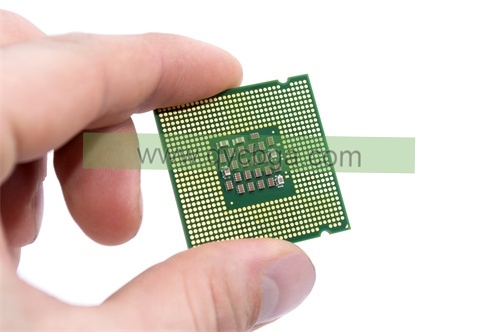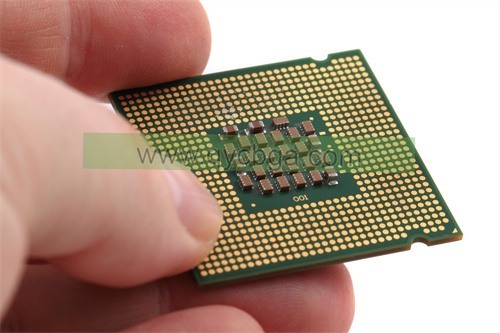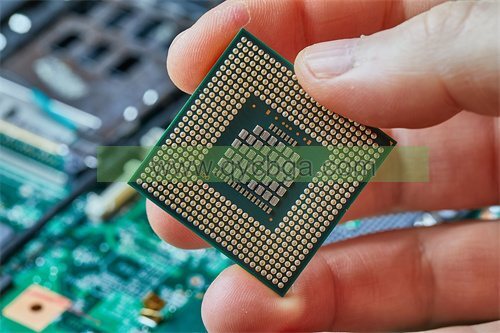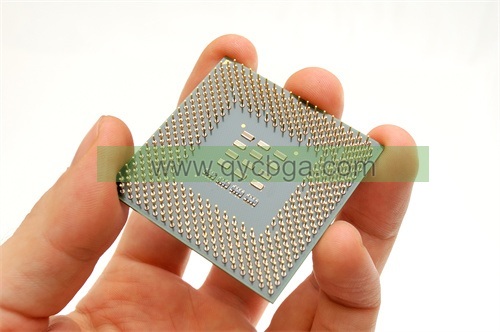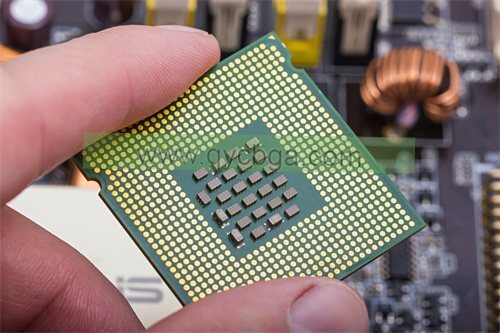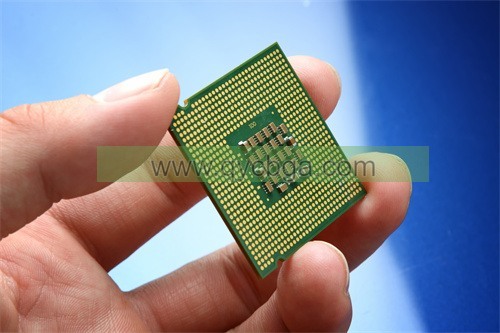とは リジッドフレックスパッケージ基板?
リジッドフレックスパッケージ基板メーカー,リジッドフレックスパッケージ基板は、リジッド回路基板とフレキシブル回路基板の利点を組み合わせて、複雑な電子アセンブリ向けの汎用性と信頼性の高いソリューションを作成します. これは、硬質基板とフレキシブル基板の複数の層をラミネートしたものです, 3次元構成と動的曲げが可能. このハイブリッド設計は、優れた機械的安定性を提供します, 相互接続の削減, シグナルインテグリティの向上. リジッドフレックス基板は、高い信頼性とコンパクトなフォームファクタを必要とするアプリケーションに最適です, 航空宇宙など, 医療機器, および家庭用電化製品. 過酷な環境や繰り返しの屈曲に耐える能力により、高度な用途に適しています, スペースと性能が重要な高密度電子パッケージング.
従来のPCB製造では, 基板は剛性があります, つまり、簡単に曲がったり曲がったりすることはできません. しかし, スペースが限られている、または柔軟性が必要な特定のアプリケーション, ウェアラブルデバイスや折りたたみ式電子機器など, リジッドフレックスパッケージ基板を使用.
リジッドフレックスパッケージ基板は、リジッドコンポーネントとフレキシブルコンポーネントの両方を1つの基板に組み合わせたものです. これにより、PCBは、その構造的完全性や機能を損なうことなく、曲げたり曲がったりすることができます. リジッドフレックス基板は、通常、硬質材料と軟質材料の交互の層で構成されています, FR-4など (ガラス繊維強化エポキシラミネートの一種) リジッドセクション用、フレキシブルセクション用ポリイミドまたはポリエステル.
リジッドフレックスパッケージ基板を使用することで、設計者は複雑な形状のより小型で軽量な電子デバイスを作成することができます, また、従来のリジッドPCBの障害点となる可能性のあるコネクタやはんだ接合部の必要性を減らすことで、信頼性も向上します アセンブリ.
リジッドフレックスパッケージ基板 design リファレンスガイド.
“Rigid-Flex Package Substrate Design Reference Guide” は、リジッドフレックスパッケージ基板の設計方法と利用方法に関する詳細なガイダンスと参考資料を提供するハンドブックです. このガイドには、次のものが含まれる場合があります:
- リジッドフレックスパッケージ基板の概要: 基本概念の紹介, 構造, リジッドフレックスパッケージ基板の適用範囲.
- 設計原則とベストプラクティス: 原則を提供する, ベストプラクティス, リジッドフレックスパッケージ基板を設計する際に従うべき考慮事項. これには、レイアウトとルーティングの推奨事項が含まれる場合があります, 相互接続方法, 折り畳み領域の設計, 等.
- 材料の選択と性能要件: リジッドフレックスパッケージ基板に使用されている材料の種類の紹介, それらのパフォーマンス特性, また、特定のアプリケーションの要件を満たすために適切な材料を選択する方法も重要です.
- 製造プロセスと技術: 製造工程の解説, 技術, リジッドフレックスパッケージ基板の製造方法を含む, ラミネート加工を含む, 穴めっき, メタライゼーション, 折りたたみ, テスティング, 等.
- デザインケースとケーススタディ: リジッドフレックスパッケージ基板の実用的な設計事例とケーススタディを提供し、読者が設計プロセスとアプリケーションプラクティスをよりよく理解できるように支援します.
- 6. 参考資料とリソースリンク: 関連資料の提供, スタンダーズ, 仕様, また、リジッドフレックスパッケージ基板の設計とアプリケーションをさらに理解するためのサプライヤーやメーカーへのリンクもあります.
このガイドは、エンジニア向けの包括的な参考資料を提供することを目的としています, デザイナー, また、メーカーは、リジッドフレックスパッケージ基板の設計と製造におけるベストプラクティスに従う必要があります, パフォーマンスの確保, 確実, 製品の品質.
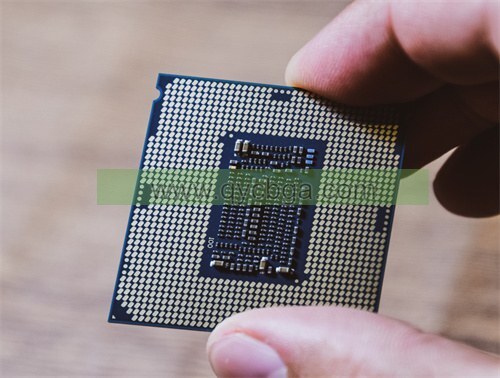
リジッドフレックスパッケージ基板メーカー
リジッドフレックスパッケージ基板に使用されている材料は何ですか?
リジッドフレックスパッケージ基板は、材料の組み合わせを組み込んで、剛性と柔軟性の望ましい特性を実現します. リジッドフレックス基板に一般的に使用される材料には、次のものがあります:
- リジッドマテリアル:
– FR-4: これは、基板の剛性部分に広く使用されている材料です. FR-4は、耐久性で知られるガラス繊維強化エポキシラミネートの一種です, 熱安定性, および電気絶縁特性.
– 硬質ポリイミド (円周率): ポリイミドフィルムは、硬質セクションにも使用されます. 優れた熱安定性を提供します, 耐薬品性, と寸法安定性.
– 硬質ポリエステル (ペット): ポリエステルフィルムは硬質部分に使用できます, 優れた機械的特性と耐薬品性を提供します.
- 柔軟な材料:
– ポリイミド (円周率): ポリイミドフィルム, カプトンなど, は、その柔軟性により、基板の柔軟な部分に一般的に使用されます, 耐高温性, そして優秀な電気絶縁性.
– ポリエステル (ペット): 柔軟なポリエステルフィルムは、その柔軟性と機械的強度のためにも使用されます. これらは、要求の少ないアプリケーションでポリイミドの代替品としてよく使用されます.
– 液晶ポリマー (LCPの): LCPフィルムは、その優れた電気的特性により、フレキシブル基板としてますます人気が高まっています, 低吸湿性, および高温耐性.
- 接着剤材料:
– 粘着フィルム: 硬質層と軟質層を接着するために、さまざまな接着フィルムが使用されます. これらの接着剤は、硬質材料と柔軟性材料の両方に良好な接着性を持ち、柔軟性を確保しながら機械的安定性を提供する必要があります.
- 導電性材料:
– 銅箔: 銅箔は、基板の硬質部分と軟質部分の両方で導電性トレースに使用されます. 銅は、その優れた導電性と標準的なPCB製造プロセスとの互換性のために好まれています.
– 導電性接着剤: 場合によっては, 導電性接着剤は、部品を基板に接着したり、層間に導電性経路を作成したりするために使用されます.
これらの材料は、アプリケーションの特定の要件を満たすように慎重に選択され、設計されています, 機械的な柔軟性など, 熱安定性, 電気的性能, と信頼性. 剛性と柔軟性のある材料を1つの基板に組み合わせることで、耐久性と性能を向上させた複雑でコンパクトな電子設計を作成できます.
リジッドフレックスパッケージ基板はどのように製造されていますか?
の製造プロセス リジッドフレックスパッケージ基板 には、硬質セクションとフレキシブルセクションの両方を組み合わせた単一の基板を作成するためのいくつかのステップが含まれます. ここでは、製造プロセスの一般的な概要を示します:
- デザインとレイアウト: 最初のステップは、電子機器の要件に応じてリジッドフレックス基板のレイアウトを設計することです. これには、コンポーネントの配置の決定が含まれます, トレース, 剛性セクションとフレキシブルセクションの両方にビアがあります.
- 材料の選択: 基板の硬質部分と軟質部分に適切な材料を選択します, それらを接着するために使用される接着剤. 一般的な材料は次のとおりです FR-4, ポリイミド, ポリエステル, 銅箔, と粘着フィルム.
- 硬質材料の準備:
– リジッドセクション用, FR-4またはその他の硬質基板は、必要なサイズと形状に切断することによって調製されます.
– 銅箔は通常、導電性トレースを作成するために硬質基板にラミネートされます.
- フレキシブルマテリアルの調製:
– 柔軟なポリイミドまたはポリエステルフィルムは、サイズと形状にカットすることによって調製されます.
– 銅箔をフレキシブルフィルムにラミネートして、導電性トレースを作成することもできます.
- レイヤーのアライメントとボンディング:
– 硬質層と軟質層は、接着フィルムを使用して整列および接着されます. これは通常、熱と圧力を使用して、層間の強力な結合を確保します.
– 粘着フィルムは、機械的安定性と柔軟性の両方を提供するために慎重に選択されています.
- 穴あけとメッキ:
– スルーホール (ビア) 基板全体に穴を開けて、異なる層間の電気的接続を可能にします.
– 次に、ビアを銅でメッキして、層間に導電性経路を作成します.
- 回路パターニング:
– 導電性トレースは、フォトリソグラフィーやエッチングなどのプロセスを使用して、硬質セクションとフレキシブルセクションの両方にパターン化されます.
– これには、レジスト材料を塗布することが含まれます, マスクを通してUV光を照射し、回路パターンを定義します, そして、不要な銅をエッチングで取り除きます.
- コンポーネントアセンブリ:
– 電子部品は、表面実装技術を使用して基板に組み立てられます (SMTの) またはその他の適切な組み立て方法.
– 導電性接着剤またははんだペーストを使用して、部品を基板に取り付けることができます.
- テストと検査:
– 組み立てられた基板は、必要な仕様と品質基準を満たしていることを確認するために、テストと検査を受けます.
– これには、電気テストが含まれる場合があります, 目視検査, および寸法測定.
- 最終仕上げ:
– 基板は、回路を保護し、その性能または外観を向上させるために、コーティングまたは表面仕上げなどの追加のプロセスを経ることができます.
製造プロセスの具体的な詳細は、設計の複雑さなどの要因によって異なる場合があります, 使用した材料, アプリケーションの要件. 全, リジッドフレックスパッケージ基板の製造には、信頼性が高く高性能な電子アセンブリを作成するために、細部と精度に細心の注意を払う必要があります.
リジッドフレックスパッケージ基板の応用分野
リジッドフレックスパッケージ基板は、剛性と柔軟性の両方を必要とする電子機器を必要とするさまざまな業界で用途が見出されています. 一般的なアプリケーション分野には、次のようなものがあります:
- 家電:
– スマートフォン: リジッドフレックス基板は、フレキシブルディスプレイの構築に使用されます, 折りたたみ式または湾曲したスクリーンデザインを可能にする.
– ウェアラブルデバイス: フレキシブル基板により、快適でウェアラブルな電子機器の作製が可能, フィットネストラッカーやスマートウォッチなど.
– ポータブルデバイス: リジッドフレックス基板は、タブレットや電子書籍リーダーなどのデバイスに使用されています, スペースと重量の節約が重要な場合.
- 医療機器:
– 私mplantableデバイス: リジッドフレックス基板は、医療用インプラントやモニタリング機器に使用されています, 体の輪郭に適合するために柔軟性が必要な場合.
– ウェアラブルヘルスモニター: FLexible基板は、バイタルサインを追跡し、リアルタイムのフィードバックを提供できるウェアラブルヘルスモニタリングデバイスの開発を可能にします.
- カーエレクトロニクス:
– 車載ディスプレイ: リジッドフレックス基板は、自動車のディスプレイやインフォテインメントシステムに使用されています, ダッシュボードやその他の内面の形状に適合できる場所.
– センサ&制御システム: フレキシブル基板は、車両全体のセンサーや制御システムに使用されています, 振動や温度変化に耐えられる場所.
- 航空宇宙・防衛:
– アビオニクス: リジッドフレックス基板は、航空機の計装に使用されています, レーダーシステム, および通信機器, 過酷な環境条件に耐えることができる場所.
– ミリタリーエレクトロニクス: フレキシブル基板は、無人航空機などの軍事用途で使用されています (UAV), 兵士用ウェアラブル電子機器, および堅牢な通信デバイス.
- インダストリアル・オートメーション:
– 制御システム: リジッドフレックス基板は、産業オートメーション機器に使用されています, ロボティックス, および製造機械, 狭いスペースで信頼性の高い電気接続を提供できる場所.
– センシング&モニタリング: フレキシブル基板により、センサーと監視デバイスを産業機器に統合し、状態監視と予知保全を実現できます.
- IoTの (モノのインターネット):
– 接続されたデバイス: リジッドフレックス基板は、スマートセンサーなどのIoTデバイスに使用されています, 環境モニター, および接続された電化製品, 多様なフォームファクタと展開シナリオに柔軟性を提供できる場所.
– スマートインフラストラクチャ: フレキシブル基板により、センサや通信モジュールを建物などのインフラコンポーネントに統合可能, 橋, スマートシティアプリケーション向けの道路.
全, リジッドフレックスパッケージ基板は、幅広い業界で革新的な電子デバイスの開発を可能にする上で重要な役割を果たします, 剛性と柔軟性のユニークな組み合わせが、現代の技術要件の要求を満たします.
リジッドフレックスパッケージ基板の利点は何ですか?
リジッドフレックスパッケージ基板は、従来のリジッドPCBやフレキシブル回路に比べていくつかの利点があります. 主な利点には、次のようなものがあります:
- スペースの節約: リジッドフレックス基板は、複数のリジッドセクションとフレキシブルセクションを1つの基板に統合することを可能にします, コネクタの必要性を減らす, ケーブル, および追加のPCB. これにより、スペースを大幅に節約できます, 特に、スペースが限られているコンパクトな電子機器では.
- 信頼性の向上: コネクタとはんだ接合部をなくすことで, リジッドフレックス基板は、電子アセンブリの潜在的な故障点を減らします. これにより、デバイスの全体的な信頼性と耐久性を向上させることができます, 特に、デバイスが機械的ストレスや振動にさらされる可能性のあるアプリケーションでは.
- 設計の柔軟性の向上: リジッドフレックス基板は、従来のリジッドPCBと比較して、より優れた設計柔軟性を提供します. 設計者は複雑な形状を作成し、曲げを組み込むことができます, ひだ, そして基板にカーブします, より革新的で人間工学に基づいたデザインを可能にする.
- 軽量化: リジッドフレックス基板は、通常、従来のリジッドPCBアセンブリよりも軽量です, 追加のコネクタやケーブルの必要性が減ったおかげで. これは、軽量化が重要なアプリケーションで有利です, ポータブルデバイスや航空宇宙アプリケーションなど.
- シグナルインテグリティの向上: リジッドフレックス基板は、信号損失と電磁干渉を低減することにより、シグナルインテグリティの問題を軽減するのに役立ちます (EMIの). リジッドフレックス基板によって提供される信号経路の短縮とインピーダンス変動の減少は、信号品質と全体的な性能の向上につながる可能性があります.
- コスト削減: リジッドフレックス基板の初期製造コストは、従来のリジッドPCBと比較して高くなる可能性があります, これにより、製品ライフサイクル全体でコストを削減できます. 組み立て時間の短縮, 部品点数の削減, また、信頼性の向上により、時間の経過とともにメンテナンスと交換のコストが削減されます.
- 耐環境性: リジッドフレックス基板は、幅広い環境条件に耐えることができます, 極端な温度を含む, 湿気, と機械的ストレス. これにより、自動車などの過酷な環境での使用に適しています, 航宇, および産業用途.
- 合理化された組み立てプロセス: リジッドフレックス基板は、必要な相互接続とはんだ接合部の数を減らすことにより、組み立てプロセスを簡素化します. これにより、より迅速で効率的な組み立てが可能になります, その結果、電子製品の市場投入までの時間が短縮されます.
全, リジッドフレックスパッケージ基板の利点は、スペースを節約できる幅広いアプリケーションに適した選択肢です, 確実, そして、設計の柔軟性は重要な要件です.
リジッドフレックスパッケージ基板の費用はいくらですか?
リジッドフレックスパッケージ基板のコストは、いくつかの要因によって大きく異なります, 含む:
- 設計の複雑さ: リジッドフレックス基板設計の複雑さ, レイヤー数を含む, 基板のサイズと形状, そして回路の複雑さ, コストに大きな影響を与える可能性があります. より複雑な設計には、通常、より多くの材料と製造手順が必要です, コストの上昇につながる.
- 使用材料: 材料のコスト, リジッドおよびフレキシブル基板を含む, 銅箔, 粘着材料, と表面仕上げ, その品質によって異なる場合があります, 可用性, と仕様. 高品質の材料は高価になる可能性がありますが、より優れた性能と信頼性を提供できます.
- 製造プロセス: リジッドフレックス基板の製造に使用される製造プロセスは、全体的なコストに影響を与える可能性があります. 一部のプロセスは、より労働集約的であったり、特殊な機器が必要な場合があります, 生産コストの上昇につながる.
- 生産量: T生産されるリジッドフレックス基板の量は、単価に影響を与える可能性があります. 通常、ボリュームが多いほど規模の経済につながります, その結果、ユニットあたりのコストが削減されます. 逆に言えば, 少量生産では、セットアップコストやツーリングコストが高くなる可能性があります, ユニットあたりの全体的なコストを押し上げる.
- サプライヤーとロケーション: Tサプライヤーの選択とその場所も、リジッドフレックス基板のコストに影響を与える可能性があります. 人件費や間接費が安い地域のサプライヤーは、より競争力のある価格を提供できる可能性があります.
- 追加サービス: 設計サポートなどの追加サービス, プロトタイピング, テスティング, また、組み立てはリジッドフレックス基板の全体的なコストに追加される可能性があります. これらのサービスは、プロジェクトの特定の要件に応じて必要になる場合があります.
多くの変数が関係しているため, リジッドフレックスパッケージの基板に特定のコストを提供することは、設計に関する詳細な情報なしには困難です, 料, 製造プロセス, と生産量. 通常, リジッドフレックス基板の入手に関心のある企業は、特定の要件とプロジェクト仕様に基づいてメーカーに見積もりを依頼する必要があります.
よくあるご質問(FAQ)
リジッドフレックスパッケージ基板とは?
リジッドフレックスパッケージ基板は、電子機器のパッケージに使用される基板の一種で、リジッドセクションとフレキシブルセクションを1つの統合構造に組み合わせています. これにより、コンパクト化が可能になります, 頼もしい, およびフレキシブル電子アセンブリ.
リジッドフレックスパッケージ基板を使用する利点は何ですか?
リジッドフレックスパッケージ基板には、スペース節約などの利点があります, 信頼性の向上, 設計の柔軟性の向上, 合理化された組み立てプロセス, 軽量化, シグナルインテグリティの向上, および環境抵抗.
リジッドフレックスパッケージ基板を一般的に使用する業界?
リジッドフレックスパッケージ基板は、幅広い業界で使用されています, 家電製品を含む, 医療機器, 自動車用電子機器, 航空宇宙および防衛, 電気通信, 工業および製造, エネルギー, そして再生可能な資源.
リジッドフレックスパッケージ基板はどのように製造されるのですか??
リジッドフレックスパッケージ基板の製造工程には、設計準備などの工程があります, 材料の準備, レイヤーのアライメントとボンディング, 穴あけと銅メッキ, 回路パターニング, カバーレイアプリケーション, コンポーネントアセンブリ, 試験と検査, 最終処理.
リジッドフレックスパッケージ基板にはどのような材料が使用されていますか?
リジッドフレックスパッケージ基板は、FR-4などの材料を使用しています, ポリイミド, ポリエステル, 液晶ポリマー (LCPの), 粘着フィルム, 銅箔, カバーレイフィルム, 無電解ニッケル浸漬金のような表面仕上げ (エニグ).
リジッドフレックスパッケージ基板のコストに影響を与える要因?
リジッドフレックスパッケージ基板のコストは、設計の複雑さなどの要因に影響されます, 使用材料, 製造プロセス, 注文数量, サプライヤー/ベンダーの価格, および必要な追加サービス.
リジッドフレックスパッケージ基板を使用して設計する際に考慮すべき点?
設計者は、機械的な制約などの要素を考慮する必要があります, サーマルマネジメント, シグナルインテグリティ, 確実, 製造可能性, リジッドフレックスパッケージ基板を使用して設計する際の環境要件.
リジッドフレックスパッケージ基板の設計に関する基準やガイドラインはありますか??
はい, 業界標準とガイドラインがあります, フレックスPCB設計用のIPC-2223やリジッドPCB設計用のIPC-2221など, リジッドフレックスパッケージ基板の設計に関する推奨事項とベストプラクティスを提供します。.
リジッドフレックスパッケージの基板設計と製造に関連する一般的な課題は何ですか??
一般的な課題には、適切な曲げ半径と屈曲領域の設計を確保することが含まれます, 熱の問題の管理, シグナルインテグリティの維持, 製造上の欠陥を最小限に抑える, 組み立てプロセスとの互換性を確保する.
リジッドフレックスパッケージ基板のサプライヤーやメーカーはどこにありますか?
リジッドフレックスパッケージ基板のサプライヤーとメーカーは、オンラインディレクトリを通じて見つけることができます, 業界の見本市, 紹介, PCBの製造と組み立てを専門とする会社への直接の問い合わせ.
 FCBGAパッケージ基板メーカー
FCBGAパッケージ基板メーカー


